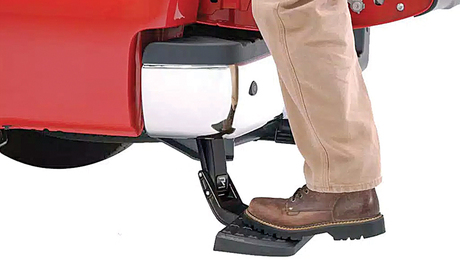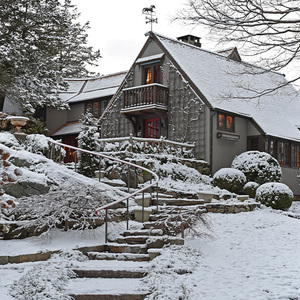Or “building secrets of the ancients”
I’m in the process of remodeling my 1914 bathroom (typical N.California bungelow ) and I have a question as to why the guys who originally built it did what they did to the floor joists. Dig: Underneath the old 1″ hex tile (which was sad to loose but I had no choice) and about 3 inches of floated floor, I found that the 2 x 10 floor joists were notched at the top. Some one had tapered them so that each joist along the spine from one side of the room to the other was only 1/4 thick, widening to the full 2″ about 2″ below the top. Along either side of the joist, about 2 inches below this narrow spine, they had sistered 1×8’s, over which they then installed skip sheathing (1×8) perpendicular to the joists. Over this whole set up they floated the floor and then laid the tile, no paper, no wire no plywood- all things not in existence or practiced back then. But my question is about the tapering and why they did it. It’ looks like it was done with a hatchet and you can see stray marks where they missed. My surmise is that it was done to make the tub easier to slide into place by removing resistant material, but that’s just a guess. Any one know why they did this?
Thanks















Replies
I'm not sure if I'm picturing this right, but it might be that they thought that chamfering off the square corners of the joist would make the concrete less prone to crack. Perhaps the thinking was that if the wood got wet and expanded, instead of pushing parallel sides apart, it would get pushed downward. Were there telltale cracks in the old tile over the joists?
Hatchets were a standard tool back then. The edges of my subfloor were trimmed that way in 1926.
-- J.S.
Hey, thanks, that's an interesting idea. Yes there were cracks running across the floor in the geneal area of a joist, but it's hard to tell since the house had settled over time so that the outside of the house was below the center. That's been corrected with a new foundation but the crack was there when we moved in. The thing is, to float a new floor Over plywood, I have to lower the joists by removing the camfered section. Other wise the plywood would take up too much space and the floor would be too thin. Thanks for the response.
This is getting to where it's hard to say what to do without seeing it. Ideally, you don't want to put plywood over the tops of the joists, but rather drop it between them on cleats much like the original installation. You want the top of the ply flush with the top of the joists. But here, the tops aren't flat. If you cut them down flat, the 2x10's effectively become 2x8's, and you have to consider the structural consequences. Could you cut the ply to match the angle and get it flush with the remaining top? You don't need the full 3" that they did in 1914, but if you want to tile over a traditional mortar bed, it has to be at least 1" thick.
-- J.S.
That's a good point. I don't want to loose the strength there. I'll have to ask my tile guy (my uncle) how much space he wants for the float job. If I need the space, and do have to pare down the joists, I can always sister more 2x8's to the existing joists. This is my own bathroom and it's a small one so cost isn't a consideration so much because I'm getting the tile job done for free as a wedding present.
Glad you raised that point. Thanks
I'm am stiil trying to understand. How was the skip sheathing riding on the floor? Was it resting on the 1 x 8 " ledgers? If That is right, then were the tops of the joists about an 1nch proud of the skip sheathing. Like a cleat embedded up and under the 3" slab? I'm asking. Sorry . I am just having a hard time visualizing. It sounds very Interesting.
"I was born in the country, razed in the city, I'm a natural born shaker from my hips to the ground"
Edited 8/14/2002 8:20:19 PM ET by Edgar76b
This was still standard practice in FLA in 1950. My father built a house and that's the way the bathroom floor was done - including using a hatchet to bevel the tops of the joists. As I recall, the concrete base came right up to the top of the joists, and then another layer of very dry mud was placed on that, followed by the 1950 version of thinset, and then the tile. Floor never cracked in my history of seeing it. That was up till Feb 1979. Walls were expanded metal mesh. w/ mud over it, followed by thinset and tile. it too never cracked.
I asked him about it while he was doing it, and he said it was to increase the strength of the concrete base - the little wings at the top would help keep the concrete from sliding down through the space between the joists. Also gave a nearly continuous concrete base for the mud base to adhere to. The top of that concrete was broom finish rough. We lived in that house for nearly two yrs before the tile was set, and I cannot recal ever seeing a crack anywhere in that structure. There was no tarpaper that I recall, although he had some slave labor (ME) go in there and treat every sq inch w/ some bilious green wood preservative. Darned near killed me. Got too much on my hands and wound up sick for about a week.
DonThe GlassMasterworks - If it scratches, I etch it!
This is exactly it. The same thing except that my house is 1914 so it must have been long in practice if yours was in the 50's. The cracking was from the house setteling. The center of the house was 4 inches above the edge of the house over a run of 20 feet. Don't think any floor could have with stood that. You could roll a ball from the living room to the bath room at good speed.
Yes, the 1x8's are perpendicular to the joist, resting on 1x8's sisistered to the joist but about 2 inches below the top of the joist itself. The joist is about 1.5 inches proud of the subfloor. The description of the house in florida from Don is exactly what I have. Two layers of mud. One to the top of the joist and then another dry pack to smooth it out, followed by the tile. It was a bear to get out. Really solid stuff.
Not that it helps you now, but I recently removed a tile floor in a 1928 tudor here in wisconsin with similar construction to yours. Put a masonry blade in my circular saw and cut the floor into 12" wide strips. Pried it up with a long bar and hauled out in sections. 35 sq ft floor took 45 mins to get out, made a hell of a mess though.
Wished I'd thought of that. Oh well, the floor now resides in my crawl space, which I'll clean up and take out through the basement, which is better than lugging it through the living room. Still I like the idea of yours way. I can see making a patio or stepping stones in the garden out of it. Here in Berekeley we're all about re-use.
Charles - What you describe was standard practice at the time and for awhile after. The point was to reduce cracking and (theoretically) ensure a better bond with the structure.
T. Jeffery Clarke
That seems to be the consensus. So much for my idea of making the tub easier to slide into place. Seemed logical.
Your quote: something about either doing a thing right lest you be very humbled?
Had trouble with the quidvis and the quamvis. Close?
Charles - Click on my name for an explanation.T. Jeffery Clarke
Quidvis Recte Factum Quamvis Humile Praeclarum
Problem with latin is that ven if you get the words genearly right you can still miss the idea. I see it now. This is way I never became the PHD I always thought I could be . Thanks for the translation.